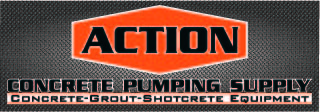| Bob | 08-11-2008 | comment profile send pm notify |
|
The following is an article from one of my safety services. It makes it sound very simple. It is not. EVERY cleaning product, white out, commercial prime product... EVERYTHING you use, gas or liquid has a MSDS sheet. I have a suggestion to make it easier and more practical. Put all the "office stuff" in one book - put all the "shop stuff" in one book - put all the "washrack" stuff in one book. Make sure everyone knows where their, and other books are kept. If possible, have a person responsible for that area keep the book up to date. Do not try and keep all the MSDS sheets in one binder. Lots of luck with this project. ;~) August 11, 2008 Getting your MSDS act in order isn't just a HazCom/WHMIS obligation. It can quite literally be a matter of life and death to the workers who rely on the completeness and accuracy of the information the MSDS contains. Here are four steps you can take to protect your organization, its workers and yourself. 1. Appoint Central MSDS AdministratorOSHA experts say it's important to designate a point person who's responsible for keeping track of MSDS. This person should:
2. Keep MSDS Database Up to DateChemical manufacturers and importers are required to send you an MSDS at first shipment and whenever there's a change. Even so, MSDS information at many companies is out of date. That may be because manufacturers send only the original MSDS and not the revised version. Or it may be because the revised MSDS gets lost or misplaced at shipment, especially if the person who takes shipment isn't familiar with the MSDS system. Compliance Strategy: Go through each MSDS at your workplace and make sure it's current. If it's more than a year or two old, you should ask the manufacturer to send a revised one or get it from the company's website. Also try: www.msdsonline.com and www.hazard.com/msds/index.php. 3. Make Sure MSDS Has All Required InformationAn MSDS may not list all the information the law requires, especially if the MSDS was prepared on site. Sometimes the omitted information can be critical, like in the Chesterton incident we discussed last week. So go through each MSDS at your workplace and ensure it contains:
Compliance Strategy: It usually takes at least three pages to fit in all this information. If an MSDS is shorter than three pages, it could be an indicator that certain information is missing. 4. Avoid Inconsistencies and Techno-BabbleCheck each MSDS for inconsistencies (for example, calling a product a liquid in one place and a gas in another). Also be on the lookout for an overload of dense technical jargon. Remember that an MSDS won't help if workers can't understand it. To make the MSDS easier to read, consider creating a "summary sheet" that highlights the product's properties and hazards. But be careful: If you change the substance of an MSDS prepared by a manufacturer, you may become liable for the contents. ConclusionOne more word of advice: To make the MSDS easier to understand, consider creating a "summary sheet" that highlights the hazards of specific chemicals. But attach the summary to the actual MSDS so workers have access to all the information if they want it |
||
| bisley57 | 08-11-2008 | reply profile send pm notify |
|
As I understand it Material Safety Data Sheets are required IN all concrete pumps that plan on entering many of the chemical plants or refineries across the country,which would normally be a MSDS sheet for diesel,hydraulic oil,motor oil,trans,pto,and rear end fluids,antifreeze,concrete and its additives,any odd spray oil,grease,and any priming substance.Of course in 23 years of operating these mad machines I have never been asked for a MSDS sheet,but you never can tell when one is needed.......... |
||
| Bob | 08-11-2008 | reply profile send pm notify |
|
I had a person from a hospital call and ask for a MSDS for concrete. Years ago that would have been easy; water, sand, rocks and cement. Today's concrete is a chemistry set. No one knows what is in it but the design engineer and the batch man. I could not help her. |
||




















.jpg)
.gif)

.jpg)









.jpg)








